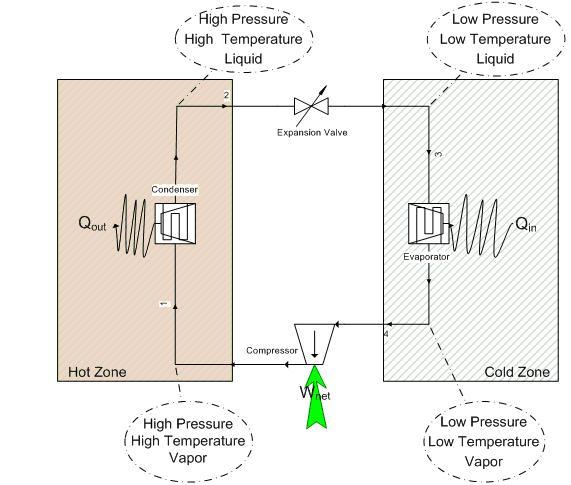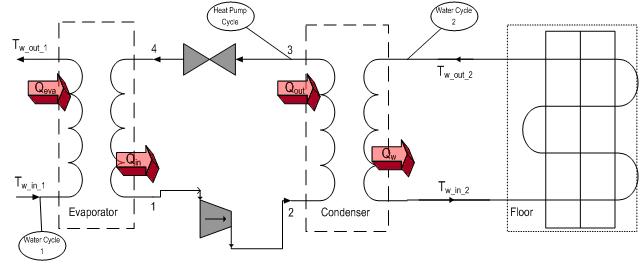|
|
|
Revisit of Modeling Vapor Compression Heat Pump for Control of a HAVC System Zhenyu Yang (Cooperated with Danfoss A/S) T he purpose of Heating, Ventilating and Air Conditioning (HVAC) control systems is to keep people comfortable in terms of desired temperature, humidity, pressure and air quality etc. within an enclosed space. The use of heat pumps as an effective indoor heating resource is gaining market as days go by due to its relatively low energy consumption and especially the potential mitigation of global warming.
Fig.1 A shematic diagram of a typical vapor compression heat pump [1]
The principal function of a heat pump is shown in Fig.1 (also here). In our previous work [1] we considered an indoor heating system consisting of a floor heating system and a heat pump together. A challenging question arises as to how to control this kind of HVAC system so as to ensure optimal energy use and meanwhile keep sufficient thermal comfort.
Fig.2 Functional diagram of a heat pump emulated as a water circulation system Our previous work followed a black-box modeling method. The heat pump function is emulated by a water circulation system, as shown in Fig.2. This way blocked a lot of understandings of system behaviors from the physics perspective. Thereby, the objective of this project is to re-investigate the mamathematical model, especially the model of heat pump, from the white-box (or gray-box) modeling [2], and re-check whether the previous work is still reasonable and possibly, there could be some room for further improvement from the control point of view. The project will mainly focus on the mathematical modeling according to some physics principles, e.g., flow dynamics and thermal dynamics, and simulation in the Matlab/Simuink environment. There is no need to touch any hardwares. References [1] Zhenyu Yang, Gerulf K. Pedersen, Lars F.S. Larsen and Honglian Thybo, “Modeling and Control of Indoor Climate Using a Heat Pump Based Floor Heating System”, ”, in Proc. of 33rd Annual Conference of the IEEE Industrial Electronics Society (IECON'07), Taipei, Taiwan, Nov. 5-8, 2007. [2] J.W. MacArthur, "Transient heat pump behaviour: a theoretical investigation", International Journal of Refrigeration, 1984, vol.7, no.2, pp.123-132.
updated 02.09.09 |

